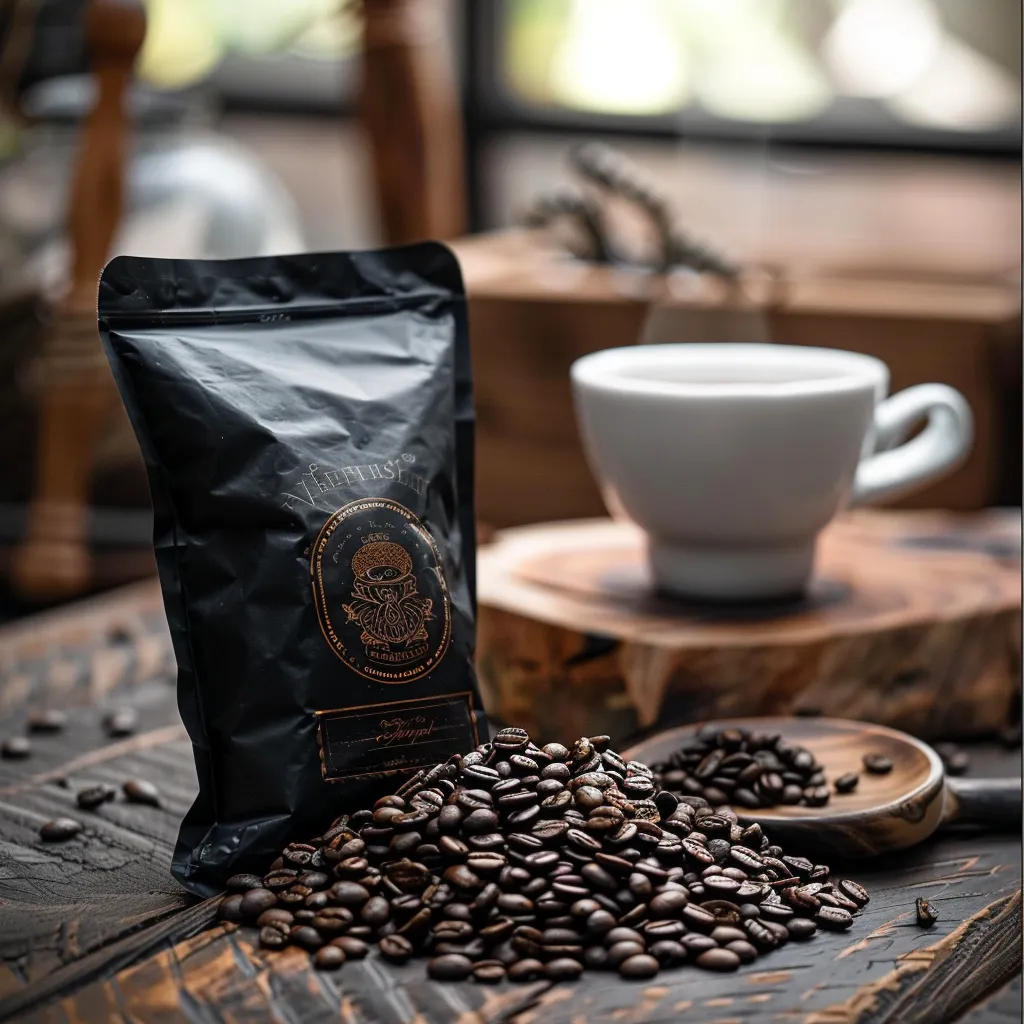Light Roast Blend
Light roast coffee blends are known for their bright and citrusy flavors, often highlighting the natural characteristics of the coffee beans. These coffees are roasted at lower temperatures, which helps to preserve the beans’ inherent flavors and acidity, resulting in a vibrant and nuanced cup. Here are some light roast blends that emphasize bright and citrusy flavors.
Light roast coffees are celebrated for their:
- Bright Acidity: The roasting process preserves the natural acids in the beans, resulting in a lively and refreshing cup.
- Fruity and Floral Notes: Common flavors include citrus fruits like lemon, lime, and orange, as well as floral notes such as jasmine and rose.
- Complex and Nuanced Flavors: The shorter roasting time allows for a wider range of flavors to come through, highlighting the unique characteristics of the coffee’s origin.
Brewing Tips for Light Roast Coffee

To fully enjoy the bright and citrusy flavors of light roast coffee, consider the following brewing tips:
- Use Freshly Ground Coffee: Freshly ground beans will provide the best flavor.
- Proper Water Temperature: Brew with water at around 195-205°F to extract the optimal flavors.
- Pour-Over Method: Methods like the V60 or Chemex are ideal for highlighting the delicate flavors of light roast coffee.

Light roast coffee blends with bright and citrusy flavors offer a refreshing and vibrant coffee experience, perfect for those who appreciate the nuanced and lively characteristics of high-quality beans.
History of Light Roast Coffee Blends
The history of coffee roasting dates back to the 15th century in the Ottoman Empire and Greater Persia, where the first known implements for roasting coffee beans were thin, circular pans made from metal or porcelain. These pans were used over open fires to roast small batches of coffee beans, which were stirred with a slender spoon. The process evolved over time, with the first cylinder roaster appearing in Cairo around 1650. This design quickly spread to Europe and the American colonies, leading to various innovations in coffee roasting equipment.
Development of Light Roast Coffee
Light roast coffee, characterized by its light brown color and bright, acidic flavor profile, has always been a part of the coffee roasting spectrum. However, it gained significant popularity in the modern era due to the specialty coffee movement. This movement began in the 1970s and 1980s, emphasizing high-quality beans and diverse roasting profiles to highlight the unique flavors of different coffee origins.
Characteristics and Popularity
Light roast coffee is celebrated for its ability to retain the original essence and fruity notes of the coffee beans. The roasting process for light roasts stops right after the first significant crack, allowing the beans to expand and develop their flavor without reaching the oil-release stage seen in darker roasts. This results in a vibrant, sweet, and delicate flavor with pronounced floral and fruity notes, often including citrus.
Cultural Significance
The preference for light roast coffee reflects a broader trend towards appreciating the intrinsic qualities of coffee beans. Modern coffee drinkers, especially those involved in the specialty coffee scene, value transparency and the skill of roasters in bringing out the natural flavors of the beans. This trend has led to the increasing popularity of light roast coffees, particularly those from high-grown Arabica origins like Ethiopia, Kenya, Colombia, and Costa Rica, known for their complex and bright flavor profiles.
Modern Trends
In recent years, light roast coffee has become synonymous with the specialty coffee industry. Roasters and coffee shops focus on sourcing high-quality beans and using precise roasting techniques to highlight the unique characteristics of each coffee. This approach has made light roast coffee a favorite among coffee enthusiasts who seek a more nuanced and vibrant coffee experience.
Conclusion
The history of light roast coffee blends is deeply intertwined with the evolution of coffee roasting techniques and the specialty coffee movement. From its early beginnings in the 15th century to its current status as a beloved choice among coffee aficionados, light roast coffee continues to be celebrated for its bright, citrusy flavors and the skill required to produce it.
What Were The First Light Roast Blends Used For
Historically, light roast coffee blends were not as prevalent as they are today. The initial purpose of roasting coffee, which dates back to the 15th century in Yemen, was primarily to make the beans palatable and to extract caffeine, rather than to highlight specific flavors. Here is a detailed look at the evolution and early uses of light roast coffee blends:
Early Uses of Light Roast Coffee Blends
1. Primitive Roasting Techniques
In the early days, coffee was roasted in small quantities using simple methods such as perforated pans over an open fire. This method was inconsistent, and the primary goal was to make the coffee drinkable and to extract its stimulating properties, rather than to develop specific flavor profiles.
2. Focus on Caffeine Content
Initially, coffee was consumed mainly for its caffeine content. The roasting process was not sophisticated, and beans were often roasted dark to mask any imperfections in quality. The concept of roasting to highlight the natural flavors of the beans was not yet developed.
3. Industrialization and Technological Advances
The Industrial Revolution brought significant advancements in coffee roasting. The introduction of gas and later electric roasters allowed for more controlled and consistent roasting processes. However, even during this period, darker roasts were more common as they were easier to produce and could mask lower-quality beans.
4. Emergence of Specialty Coffee
The modern appreciation for light roast coffee blends emerged with the specialty coffee movement, which began in earnest in the late 20th century. This movement emphasized high-quality beans and meticulous roasting techniques to preserve and highlight the unique characteristics of the coffee. Light roasts became popular as they allowed the natural flavors, such as bright and citrusy notes, to shine through.
5. Nordic Influence
In the early 2000s, Nordic countries played a significant role in popularizing light roast coffee. Scandinavian roasters and baristas, such as Tim Wendelboe and Solberg & Hansen, championed light roasting to celebrate the natural attributes of single-origin coffees. This approach became a hallmark of the specialty coffee scene and influenced global coffee culture.
Conclusion
The first light roast coffee blends were not specifically developed for their unique flavors but were part of the broader evolution of coffee roasting techniques. It was only with the advent of the specialty coffee movement and technological advancements that light roast blends began to be appreciated for their ability to highlight the distinct and nuanced flavors of high-quality coffee beans. Today, light roast coffee is celebrated for its bright acidity, floral and fruity notes, and the skill required to produce it.


